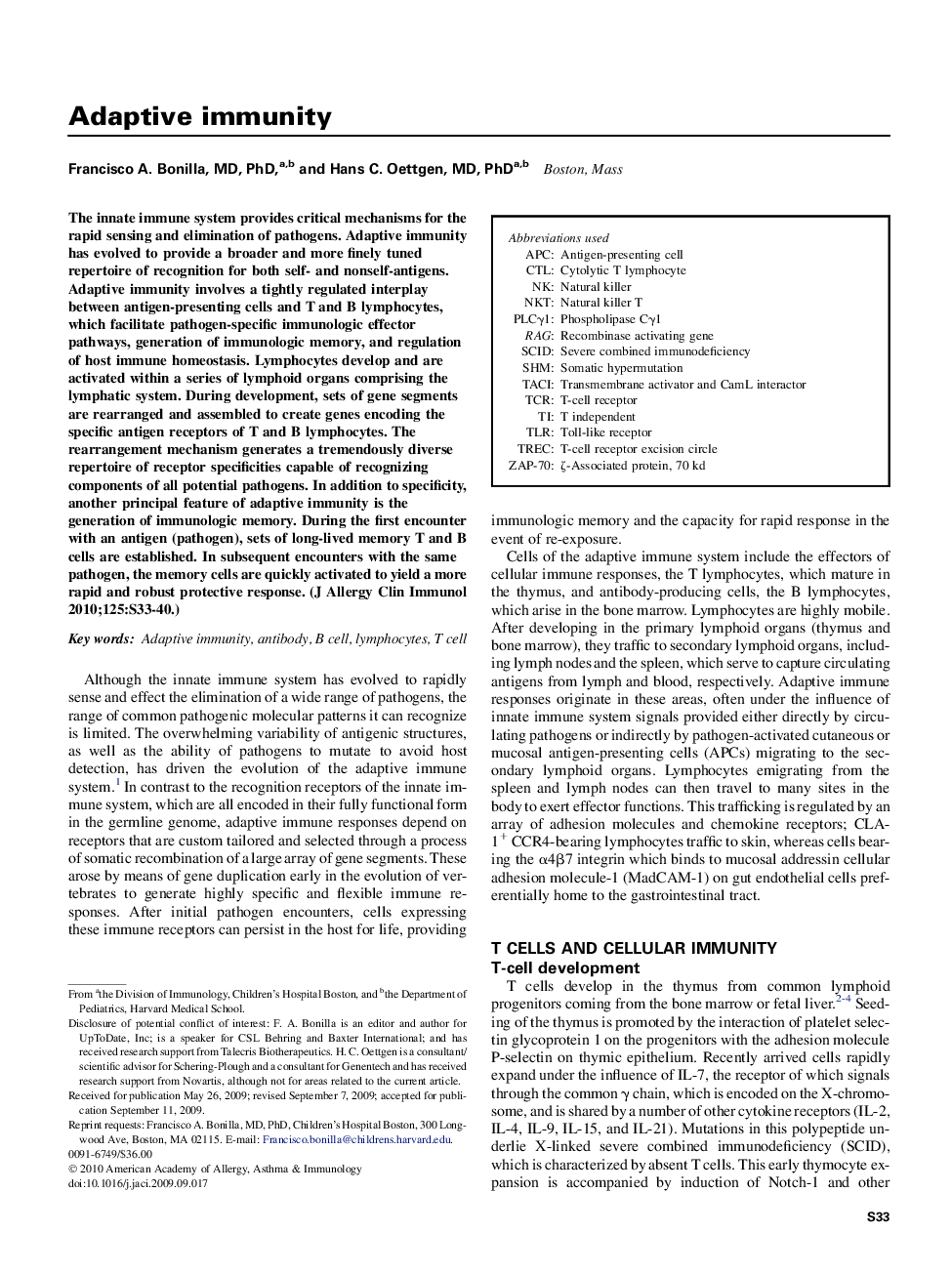| کد مقاله | کد نشریه | سال انتشار | مقاله انگلیسی | نسخه تمام متن |
|---|---|---|---|---|
| 3199743 | 1201921 | 2010 | 8 صفحه PDF | دانلود رایگان |

The innate immune system provides critical mechanisms for the rapid sensing and elimination of pathogens. Adaptive immunity has evolved to provide a broader and more finely tuned repertoire of recognition for both self- and nonself-antigens. Adaptive immunity involves a tightly regulated interplay between antigen-presenting cells and T and B lymphocytes, which facilitate pathogen-specific immunologic effector pathways, generation of immunologic memory, and regulation of host immune homeostasis. Lymphocytes develop and are activated within a series of lymphoid organs comprising the lymphatic system. During development, sets of gene segments are rearranged and assembled to create genes encoding the specific antigen receptors of T and B lymphocytes. The rearrangement mechanism generates a tremendously diverse repertoire of receptor specificities capable of recognizing components of all potential pathogens. In addition to specificity, another principal feature of adaptive immunity is the generation of immunologic memory. During the first encounter with an antigen (pathogen), sets of long-lived memory T and B cells are established. In subsequent encounters with the same pathogen, the memory cells are quickly activated to yield a more rapid and robust protective response.
Journal: Journal of Allergy and Clinical Immunology - Volume 125, Issue 2, Supplement 2, February 2010, Pages S33–S40